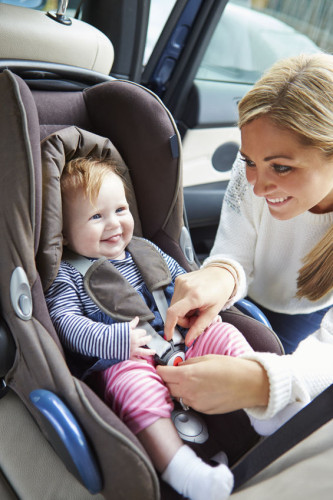Five common car-seat mistakes that can put your kids at risk

All 50 states have laws requiring children under three years of age be buckled into an approved safety seat. Yet according to the National Highway Traffic Safety Administration, three out of four car seats have not been installed correctly.
The most common mistakes: Not tightening the seat straps, failing to adhere to the manufacturer’s safety instructions and using the seat belt incorrectly. What’s more, 20 percent of all drivers transporting child passengers admitted that they did not read the instructions for properly installing their child seat. Child safety seats reduce the risk of death by 71 percent for infant passengers and 54 percent for toddlers from one to four years old, but the seat must be installed correctly to offer the maximum protection.
Here are some of the most common mistakes caregivers make when installing car seats.
1. Not matching the seat to the child’s weight or age. Make sure you check the label on the car seat to make sure it is appropriate to your child’s age, weight and height.
2. Not installing it tightly enough. The best way to know if your child safety seat has been properly installed is to shake the seat and see if you can move it more than one inch from side to side, or front to back. If there’s too much play, tighten the straps.
3. Prematurely turning the seat to the forward-facing position. In general, car seats should be in the rear-facing position until the child is at least a year old or has reached a weight of between 20 and 30 pounds. Once a child exceeds the maximum weight listed for a car seat, you can replace it with a larger model or a booster seat.
4. Incorrectly using the safety-seat straps. Simple mistakes can prove deadly. Slipping a seat belt through the wrong harness slot, improper seat belt placement, not ensuring the harness clip is even with the baby’s shoulders or armpits — any one of these can prove fatal to your baby in the event of a crash.
5. Not reading all the instructions. It’s definitely not the most exciting reading. But always read the manufacturer’s instructions and follow installation procedures closely.

